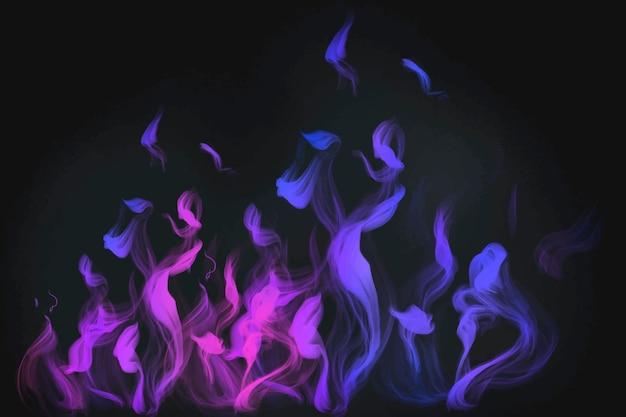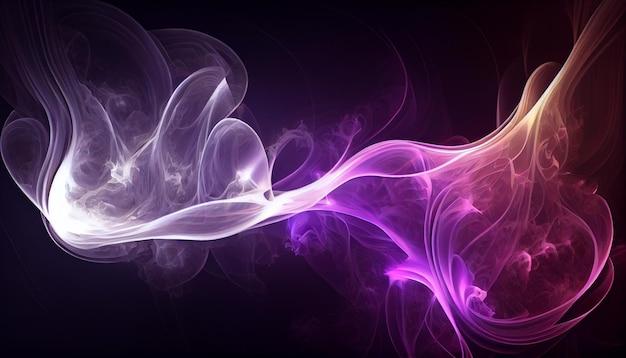Do you ever find yourself mesmerized by the dancing flames of a fire? The brilliant oranges and fiery reds can be both captivating and comforting. But have you ever wondered if fire can exist in other extraordinary colors, like purple? In this blog post, we embark on a journey to untangle the enchantment of fire and explore the intriguing question: is purple fire real?
As we delve into this topic, we’ll also explore the hottest fires, the colors associated with different temperatures, and some other captivating hues that fire can produce. So sit back, grab your favorite warm beverage, and let’s dive into the enchanting world of fire, where scientific facts ignite with our innate curiosity.

Is Purple Fire Real
Have you ever seen purple fire? It’s a question that has sparked the curiosity of many people. Could there be flames out there that dance in shades of violet? Let’s dive into this captivating topic and explore whether purple fire is real or just a fantastical concept.
The Chemistry behind Fire
Before we dive into the enigmatic realm of purple fire, let’s first understand the chemistry behind fire. Fire is the result of a chemical reaction between fuel, heat, and oxygen. When these three elements combine in the right conditions, combustion occurs, releasing energy in the form of heat, light, and various colors.
The Colors of Flames
When you think about fire, what colors come to mind? Most people might say red, yellow, or orange. These are indeed the most common colors associated with flames. However, fire can exhibit a wide range of colors, depending on the elements present in the burning material.
The Role of Chemicals in Flame Color
To achieve a different flame color, you need to introduce specific chemicals to the fire. For example, copper can produce a blue-green flame, while strontium results in a bright red flame. Different chemicals produce different colors due to the specific energy levels they release when burning.
The Purple Fire Misconception
Now, let’s get back to the burning question: is purple fire real? Despite what you may have heard or seen in fictional works, pure purple fire does not naturally occur. While it is theoretically possible to create purple fire by introducing the right combination of chemicals and temperature, it is not something you would commonly come across.
The Science Behind Purple Flames
Though pure purple flames do not exist, certain chemicals can produce violet hues within a flame spectrum. For instance, a combination of potassium chloride and copper sulfate can create a purple tinge in the flame. However, this color is often less vibrant and more on the pinkish side of the purple spectrum.
The Illusion of Purple Fire
What about those intriguing videos or pictures that claim to show purple fire in all its glory? Well, it’s essential to approach them with skepticism. Lighting conditions, camera filters, and editing techniques can alter the appearance of flames, giving the illusion of purple fire. So, next time you stumble upon a captivating image of purple flames, take it with a pinch of salt.
The Magic of Fire
While pure purple fire may be elusive, let’s not underestimate the mesmerizing nature of flames. Fire, in all its colors and forms, remains a captivating force in our lives. It warms our homes, cooks our meals, and has a certain mystical quality that continues to enthrall us.
The Verdict
In conclusion, although purple fire in its true form may not exist in nature, the addition of specific chemicals can create violet hues within a flame. However, it’s crucial to approach claims of pure purple fire with skepticism, as they may be the result of camera tricks or editing. Nonetheless, the captivating allure of flames in various colors continues to fascinate us and remind us of the magic of fire.
Now that we’ve explored the captivating concept of purple fire, let’s move on to another intriguing topic.

FAQ: Is Purple Fire Real
Welcome to our comprehensive FAQ-style guide on the burning question: Is purple fire real? Today, we’re going to dive into the world of flames, colors, and fire science to answer all of your burning questions. Get ready for some fiery knowledge!
What’s the Hottest Fire
When it comes to fire, the hottest flame is typically a dazzling shade of blue. Scientifically speaking, the temperature needed to produce blue fire is around 1,400-1,600 degrees Celsius (2,552-2,912 degrees Fahrenheit). That’s hotter than a sizzling summer day in Death Valley!
What Color is the Hottest Fire
As mentioned earlier, the hottest fire burns blue. But have you ever wondered about the other colors flames can take on? Let’s light up your curiosity!
What Makes Pink Fire
If blue fire is the hottest, then pink fire must be as cool as an iceberg, right? Well, not exactly. Pink flames are usually a result of burning certain chemicals, such as lithium salts or potassium nitrate. So, the next time you see a pink fire, don’t get too chilled out!
What Burns Blue in a Fire
Did you know that certain elements can create mesmerizing blue flames? Substances like copper, arsenic, and lead can produce those captivating blue hues when they burn. It’s like having your own personal fireworks show!
What is the Coldest Fire
Now, let’s turn down the heat and talk about the coldest fire. While there isn’t a specific color associated with the coldest fire, a low-temperature flame might be more orange or even yellowish in appearance. It’s like the cozy warmth of a crackling fireplace on a wintry night.
How Hot is Orange Fire
Orange you curious about the temperature of an orange fire? Well, on average, orange flames can reach temperatures ranging from 1,100 to 1,400 degrees Celsius (2,012 to 2,552 degrees Fahrenheit). That’s definitely hot enough to roast marshmallows for s’mores!
How Do You Make Purple Fire at Home
Now we come to the big question: Is it possible to make purple fire at home? Absolutely! To achieve this captivating color, you can mix potassium compounds with rubbing alcohol. But remember, safety first! Always handle fire-related experiments with caution and under adult supervision.
Is Green Fire Real
Yes, green fire is indeed real! It’s a result of burning chemicals containing copper, like copper sulfate or boric acid. Just imagine the enchantment of having an emerald-green flame dancing before your eyes. Talk about a dazzling light show!
Is Blue Fire Real
Yes, blue fire is absolutely real! As we mentioned earlier, certain elements and chemicals can produce those mesmerizing blue flames. So, the next time you see azure hues flickering in a fire, you can confidently say, “Yes, that’s real blue fire!”
Who Uses Purple Fire
While purple fire may not be as common as its blue or orange counterparts, it has its own special place. For example, pyrotechnicians sometimes use compounds containing strontium to create purple pyrotechnic effects in fireworks. Purple fire adds an extra touch of magic to any celebration!
Can You Make Fire Burn Purple
Certainly! By incorporating strontium salts into your fire source, you can produce those enchanting purple flames. Just be sure to handle and experiment with fire responsibly and with the necessary safety precautions.
Does Coldfire Exist
As exciting as it might sound, there isn’t really such a thing as “coldfire.” Fire, by its nature, is the result of a chemical reaction that releases heat and light. So, while coldfire might be a cool concept for a fantasy novel, it’s not something you’ll find in the real world.
What is Blue Fire Called
Blue fire is often referred to as “azure fire” or “cobalt fire.” These names capture the brilliance and beauty of this unique flame color. So, the next time you encounter azure flames, you’ll know exactly what to call them!
What is the Coldest Color of Fire
As we mentioned earlier, the coldest flames tend to appear more orange or even yellowish. However, it’s important to note that the color of a fire can vary depending on the materials being burned and the temperature at which they burn. Fire is a fascinating dance of science and colors!
How Hot is a Purple Flame
A purple flame can reach temperatures similar to other types of flames, usually ranging between 1,100 and 1,600 degrees Celsius (2,012 and 2,912 degrees Fahrenheit). So, while it may look magical, it’s still as hot as any other flame!
Is Purple Fire Hotter than Blue Fire
No, purple fire is not hotter than blue fire. Remember, the temperature of a flame determines its color, and blue fire burns hotter than purple fire. So, if you’re trying to impress your friends with the hottest fire around, you’ll want to stick with that dazzling blue hue!
What is the Coldest Color
While it’s not directly related to fire, the coldest color is often considered to be violet. So, if you’re looking for a color that feels as cool as a winter breeze, violet is your go-to!
Is Blue Fire Hotter than Orange Fire
Absolutely! Blue fire, with its higher temperature, outshines orange fire when it comes to heat. Orange fire is still hot, mind you, but it’s no match for the scorching intensity of a blue inferno!
What is Green Fire
Green fire is a fascinating phenomenon that occurs when copper-based compounds burn. So, if you’re lucky enough to witness a vibrant green flame, you can thank copper for adding a touch of awe-inspiring beauty to the fiery landscape.
We hope this fiery FAQ-style guide has shed some light on the fascinating world of fire colors! From the blistering blues to the enchanting purples, flames have the power to captivate and mesmerize us. Just remember, while you may not stumble upon purple fire every day, knowing the science behind these colors can make your next campfire chat even more blazingly interesting! Stay curious and keep exploring the magical realm of fire and its kaleidoscope of mesmerizing hues. Stay tuned for more burning questions and scorching answers right here on our blog!